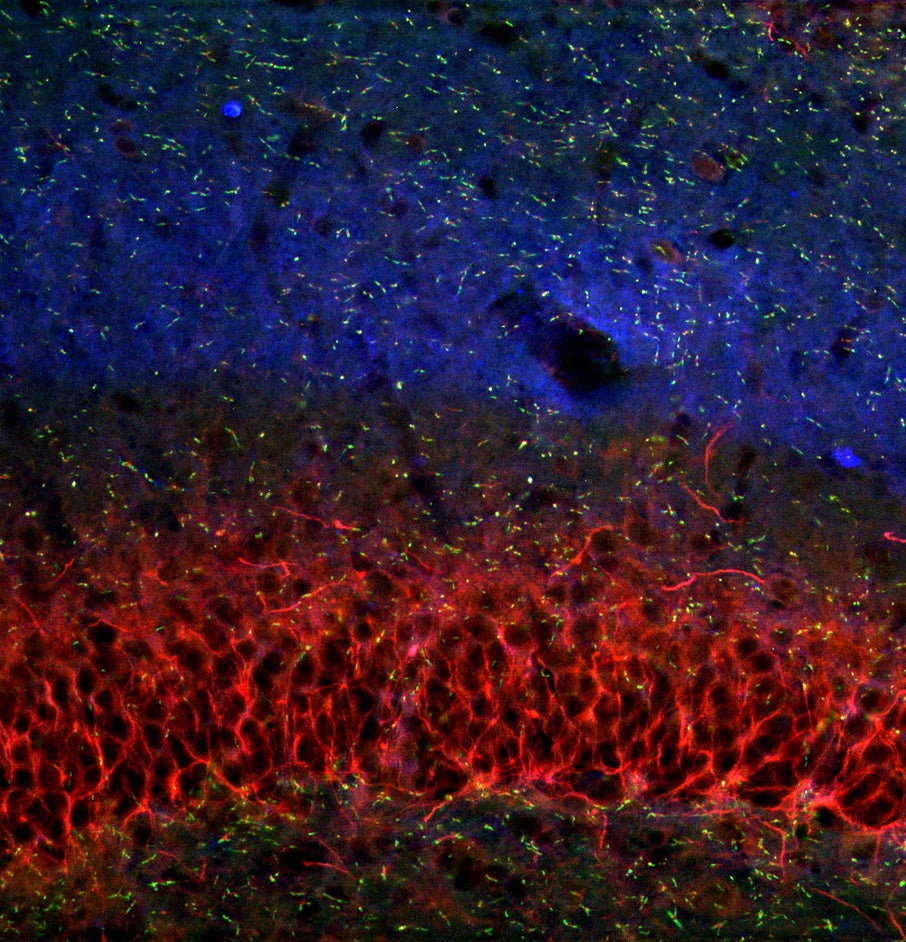Question-driven Research: Ion Channel Signaling Complexes
The human brain is made up of highly specialized cells with different shapes and functions. In particular, each neuron type has been found to express its own repertoire of ion channels that play a crucial role in neuronal activity. More recently, it has become clear that ion channels exist in signaling complexes that are localized to discrete subcellular domains or compartments within the neuron. Our goal is to understand the role of specific ion channel signaling complexes in neuronal function and disease.
Our studies are aimed at a molecular understanding of how neuronal ion channels and their associated signaling complexes generate and maintain the fidelity of neuronal signaling, how these processes can be dynamically regulated to generate neuronal plasticity, and how they become dysregulated in disease.
We have focused our research on the subcellular compartmentalization of plasma membrane ion channel signaling complexes, and how this shapes the signaling events that define neuronal function. We have addressed these questions primarily as related to voltage-gated ion channels in mammalian brain neurons. This includes studies on voltage-gated sodium (Nav) channels and voltage-gated potassium (Kv) channels of the Kv1 family localized to the axon initial segment, at nodes of Ranvier and in presynaptic terminals. We have also studied Kv4 channel complexes that regulate excitability of distal dendrites.
Much of our recent work has focused on the Kv2.1 channel that is abundantly expressed in large clusters restricted to the soma, proximal dendrites, and axon initial segment of brain neurons. Recent work from our lab and others has shown that these clusters are sites where the endoplasmic reticulum and plasma membrane form specialized junctions (ER-PM junctions). Though ER-PM junctions have received attention in non-neuronal cells, there is little known about them in neurons.
We have recently discovered that Kv.2.1 plays a unique role among all plasma membrane proteins in organizing ER-PM junctions. This nonconducting function is in addition to Kv.2.1’s established role as an ion channel regulating neuronal electrical activity. Our mass spectrometry-based proteomics analyses identified the ER VAP proteins as Kv2.1 interacting proteins whose interaction with Kv2.1 mediates ER-PM junctions. Our analyses uncovered other proteins localizing at ER-PM junctions that are known to mediate the localized calcium and lipid signaling and homeostasis that occurs at these sites. We are using a combination of experimental approaches including live cell imaging, electrophysiology, immunohistochemistry and biochemistry to define the functional and molecular characteristics of these signaling complexes and their impact on neuronal function.
Our studies will contribute both to our basic knowledge of brain function and provide insights into disease. Specifically, we are studying the impact of de novo mutations in the KCNB1 gene that encodes Kv2.1 in encephalopathic epilepsy patients, many of whom also exhibit severe neurodevelopmental delays and cognitive impairment. We are using a variety of approaches, including employing CRISPR technology to develop mutant mouse strains, to gain insights into how these patient-associated mutations affect the conducting and nonconducting functions of Kv2.1, and how this impacts brain function.

